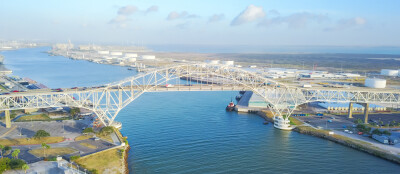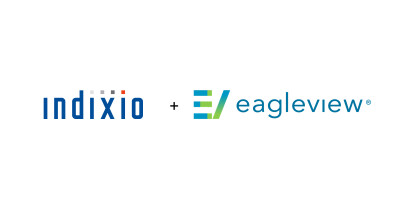Last year 3D laser scanning had its best year ever. We are still compiling the numbers but the early results indicate that more scanners were sold than ever before. The anecdotal evidence also says that the existing fleet of scanners is working harder than ever. Some users are so busy with their instruments that they’re purchasing their second and third scanners. Other service providers that previously rented machines are now buying their own. The joint is jumpin’!
What should we look for in 2005?
Laser scanning is a technology that really shines when labor is expensive, capital is scarce, schedules are tight and appetites for project risk are low. I don’t know anyone who expects relief from any of these conditions this year. So what should we expect to be different this year?
Here are five trends we see.
1. Stable prices for hardware
There seems to be little doubt that scanner prices will come down significantly in the future. However, we don’t think 2005 is the year we will see big decreases in pricing and by big, we mean more than 10%. Why not? Easy! Consider the microeconomics. Service providers who own their own scanners don’t want to see price erosion – that would only make it easier for new competitors to enter the market. Scanner providers want to sell all the six-figure scanners they can. Consumer surplus is what economists call the difference between the maximum a customer is willing to pay for a product and the amount actually paid – we see little evidence that scanner providers are in a big hurry to expand this surplus. Most of them have significant development costs of their own to recoup. No doubt in time prices will come down – just look at the price of today’s GPS systems and compare them to GPS system prices in the early ’80s. Computer hardware is another good example of the same pricing volume phenomenon.
It’s not a question of if laser scanning prices will come down significantly so much as a question of when. Our view: don’t expect significant price decreases this year.
2. Increased involvement from asset owners
A small but growing number of production asset owners who understand the values that can be delivered by 3D laser scanning have started to insist that laser scanning be used on their capital projects – particularly revamp projects where rework is a big issue. At stake is not just the capital cost of fixing flawed or incomplete design in the field but outage or delayed production cost. We see more and more owners from a variety of industries and markets – civil infrastructure, refining, nuclear and fossil fuel power generation, chemical, pharmaceutical, offshore construction, consumer products and automobile manufacturing – specifying the use of laser scanning, or acquiring the technology themselves. Driving EPC contractors to use the technology has some challenges, particularly when the contractor’s business model is based on cost reimbursement. We believe the scale is tipping and that contractors will have to adopt the technology or lose the business.
Our bet is that asset owner awareness of the value of laser scanning will snowball in 2005. geovisit(); geovisit();
geovisit();
3. More construction applications
The business case for using laser scanning gets even more compelling when it boosts construction efficiency. Reducing surveying and engineering costs is certainly an important value, but a 10% reduction in engineering costs pales in comparison to reducing construction costs by the same amount. We are beginning to see 3D laser scanning used as a tool for better construction sequencing and pre-job simulation. In some instances scanning is useful for monitoring and auditing construction progress. Some companies are also beginning to appreciate that scanning brings a new level of accountability to three groups that have to work together to execute projects: engineering, construction and fabrication. Last year we learned of several cases where laser scanning measurements revealed discrepancies between invoiced materials and delivered materials – we understand that these measurements are the basis of subsequent claims litigation. Scaffolding, concrete, asphalt, fill – expect better measurements of bulk quantities.
This year we expect even more construction managers to get on board. Some purchasing managers are already convinced.
4. Better integration with CAD
Last year saw some design software companies advance integration of point cloud data with CAD geometry in meaningful ways. Bentley has had this capability this for years – support for this comes right from the top. Intergraph started shipping SmartPlant Review 5.1 which integrates with BitWyse Solutions LASERGen and Leica Geosystems HDS Cyclone Point Cloud Engine software. AVEVA says it will deliver product later this year with this capability. Some Autodesk customers we met at Autodesk University in Las Vegas late last year are starting to see the value and we believe they can expect more solutions from third parties this year. And for 2005? We believe all these companies will make it easier for their customers to use point cloud data in the coming year, either directly or with their partners.
CATIA customers certainly have much more restricted choices and capabilities when it comes to using point cloud data from terrestrial laser scanners. Despite this, CATIA customers are using laser scanner data and getting impressive results using creative workarounds. Don’t hold your breath waiting for Dassault Systèmes to make this any easier
5. Data skirmishes
Who owns the data? How accessible is it? Asset owners, engineering contractors and service providers are beginning to ask themselves how much they value access to the raw data produced by laser scanning devices. Some users want to decouple the decision about which post-processing application to use from the decision about which data acquisition tool to use. Some scanner vendors see their performance advantage strongly linked to their database know-how and are consequently unwilling to expose this to their competitors. Other vendors see their openness as competitive differentiation. Some service providers that want to add value beyond data acquisition are less than enchanted by the prospect of completely open data access. Others depend on open data formats to get the results their customers demand.
We’ll report more on this issue in the coming months. geovisit(); geovisit();
geovisit();







